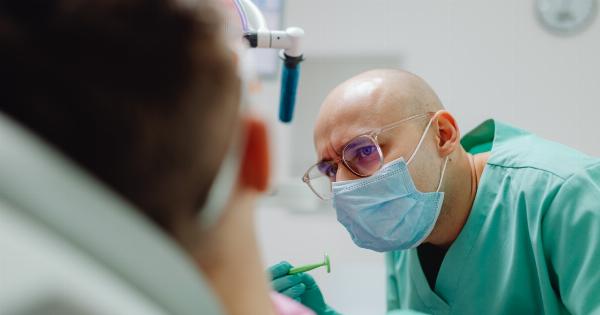Hip arthroplasty, also known as hip replacement surgery, is a common procedure that involves replacing a damaged or diseased hip joint with an artificial joint or prosthesis.
This surgical intervention aims to alleviate pain, improve mobility, and enhance the overall quality of life for individuals with debilitating hip conditions. However, the success of the surgery greatly depends on the patient’s commitment to a proper recovery process.
Unfortunately, there are several common mistakes that patients often make during hip arthroplasty recovery, which can hinder their progress and prolong their rehabilitation.
1. Neglecting Rehabilitation Exercises
One of the most common mistakes made during hip arthroplasty recovery is neglecting or avoiding rehabilitation exercises.
These exercises, which are typically prescribed by a physical therapist, are crucial for promoting joint flexibility, strength, and stability. Neglecting these exercises can result in a slower recovery, stiffness, and reduced range of motion in the hip joint.
2. Overexerting and Overdoing Activities
While it’s important to engage in regular physical activities during the recovery period, overexerting and overdoing activities can be detrimental.
Pushing the body too hard or engaging in high-impact exercises that put excessive stress on the hip joint can lead to complications such as dislocation, implant loosening, and delayed healing. It’s essential to follow the surgeon’s and physical therapist’s guidelines to ensure a safe and gradual return to normal activities.
3. Ignoring Pain and Discomfort
Pain and discomfort are normal during the initial stages of hip arthroplasty recovery. However, ignoring or downplaying persistent or worsening pain can be a mistake. It may indicate complications such as infection, implant failure, or improper healing.
It’s crucial to communicate any unusual or severe symptoms with the healthcare team to address them promptly and avoid potential complications.
4. Poor Nutrition and Hydration
A balanced diet and proper hydration are essential for healing and overall well-being. Many patients make the mistake of not paying enough attention to their nutritional intake during hip arthroplasty recovery.
Adequate protein, vitamins, and minerals are necessary for tissue repair and immune function. Additionally, staying hydrated helps maintain optimal body function and assists in the healing process.
5. Neglecting Wound Care
Proper wound care is crucial for preventing infection and promoting healing after hip arthroplasty. Neglecting wound care instructions, such as keeping the incision clean and dry, can increase the risk of complications.
It’s important to follow the surgeon’s guidelines, regularly change dressings if instructed, and promptly report any signs of infection, such as redness, swelling, or discharge.
6. Incorrect Use of Assistive Devices
In the immediate postoperative period, assistive devices like crutches, walkers, or canes may be required for mobility support. However, many patients make the mistake of not properly using these devices or relying on them for too long.
Incorrect use of assistive devices can compromise stability, delay recovery, and lead to muscle imbalances. It’s essential to receive proper training in using assistive devices and gradually wean off them as per the guidance of the healthcare team.
7. Resuming Work Too Soon
Returning to work too early after hip arthroplasty can impede the recovery process and even jeopardize the results of the surgery.
Depending on the nature of the job, individuals may need to take an extended leave of absence or modify their work duties temporarily. Rushing back to work without adequate rest and recovery can lead to complications, increased pain, and reduced surgical outcomes.
8. Neglecting Psychological and Emotional Well-being
Undergoing hip arthroplasty is not only a physical but also an emotional journey. Neglecting psychological and emotional well-being during the recovery process is a common mistake.
Anxiety, depression, and frustration are possible outcomes of the surgery and the associated limitations. Seeking support from friends, family, or mental health professionals can aid in coping with these emotions and maintaining a positive outlook during the recovery period.
9. Improper Medication Management
Following the prescribed medication regimen is crucial for managing pain, preventing infection, and promoting healing.
However, patients often make mistakes with medication management, such as skipping doses or failing to take medications at the recommended times. Consistency and adherence to the prescribed medication schedule are important for achieving optimal outcomes and minimizing complications.
10. Failing to Attend Follow-up Appointments
Postoperative follow-up appointments play a vital role in monitoring the progress of hip arthroplasty recovery. Many patients make the mistake of skipping or rescheduling these appointments, especially if they feel like their recovery is going well.
These appointments allow the healthcare team to assess the healing process, address any concerns or complications, and make necessary adjustments to the treatment plan if required.
Conclusion
Hip arthroplasty recovery is a complex process that requires dedication, patience, and adherence to proper guidelines.
Avoiding common mistakes during this crucial phase is essential for maximizing the benefits of the surgery and achieving a successful outcome. By actively engaging in rehabilitation exercises, listening to the body’s limitations, maintaining good nutrition and wound care, and prioritizing overall well-being, patients can pave the way for an optimal and efficient recovery journey.






























